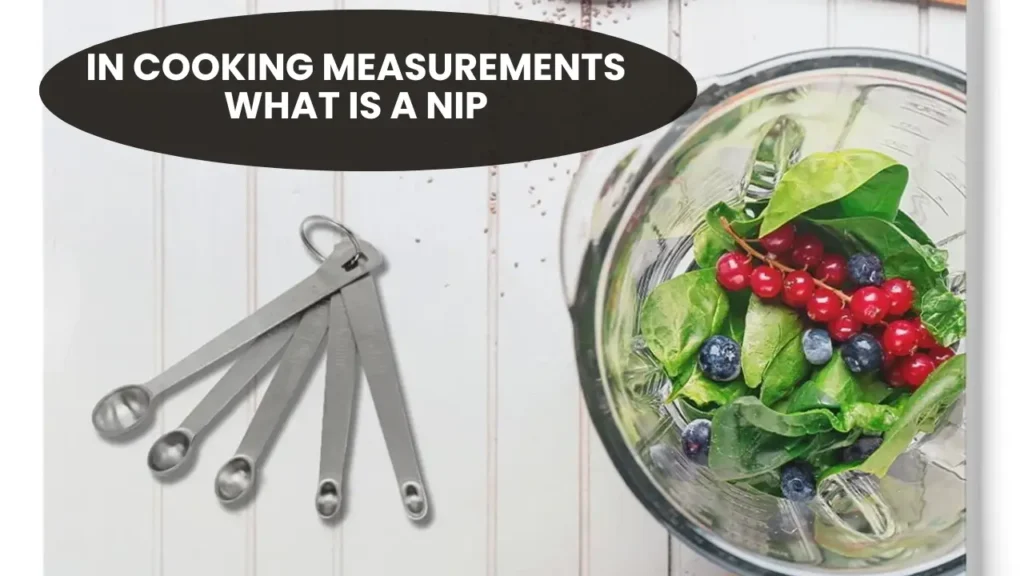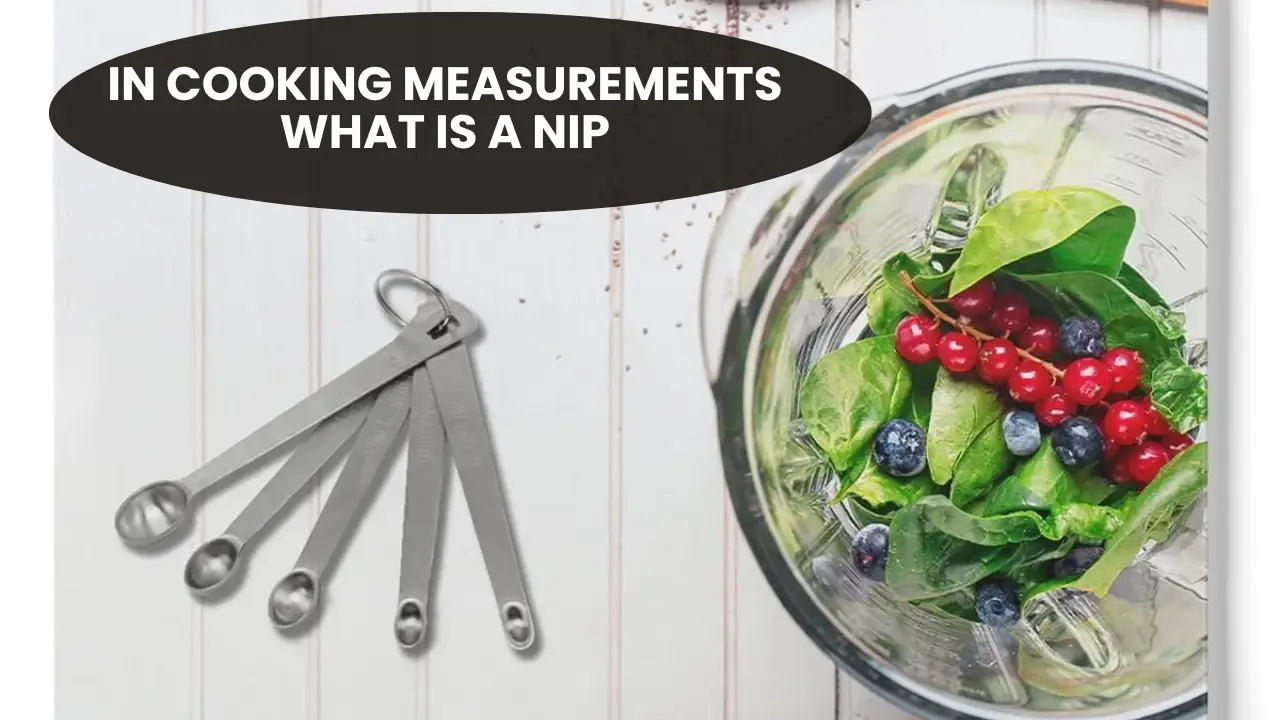
In Cooking Measurements What is a Nip, Cooking measurements are essential for achieving the desired outcomes in culinary practices. They provide a standardized way to quantify ingredients, ensuring consistency and accuracy in recipes. Whether baking a cake or crafting a cocktail, knowing how to measure ingredients correctly can significantly impact the final result.
Introduction of the Term “Nip”
One lesser-known measurement in cooking is the “nip.” While it may not be as commonly recognized as teaspoons or cups, it serves a specific purpose, particularly in the realm of liquid ingredients. Understanding what a nip is can enhance your cooking and bartending skills.
Importance of Understanding Measurement Terms in Cooking
Being familiar with different measurement terms allows cooks and mixologists to follow recipes accurately, make adjustments, and create delicious dishes and drinks. This knowledge can be particularly beneficial for novice cooks and aspiring bartenders who want to master their craft.
In Cooking Measurements What is a Nip?
A nip is a small unit of measurement equivalent to 1/4 ounce (or 7.5 milliliters). It is often used when adding liquids to recipes, providing just enough to impart flavor without overwhelming the dish.
Common Contexts Where “Nip” is Used
- Cooking: In the culinary world, a nip is typically used to measure flavorings or extracts, ensuring that the balance of flavors is just right.
- Bartending and Mixology: In the world of cocktails, a nip can denote a small pour of liquor, often used in drinks that require precision for optimal taste.
Historical Background
The term “nip” has its roots in the early 20th century and is believed to have derived from the action of taking a quick sip of liquor. Its usage has evolved over the years, finding a place in both culinary and alcoholic contexts.
Evolution of Its Use in Culinary Contexts
Initially used primarily in bartending, the term has gradually made its way into cooking terminology. It emphasizes the precision required when dealing with potent ingredients that can easily alter the dish’s flavor profile.
Cultural Significance in Different Regions
While the term “nip” is widely recognized in English-speaking countries, its usage can vary. In some cultures, similar measurements may exist, highlighting the global nature of culinary practices and the need for standardization.
Measurement Conversions
How a Nip Fits into Standard Cooking Measurements
A nip fits into the broader context of cooking measurements, allowing for precise adjustments.
Comparison with Teaspoons, Tablespoons, and Ounces:
- 1 nip = 1/4 ounce
- 2 nips = 1/2 ounce
- 4 nips = 1 ounce (approximately 30 milliliters)
Other Equivalent Measurements
In addition to its equivalence to ounces, a nip can also be converted into milliliters.
- 4 nips = 1 ounce
- 1 nip = 7.5 milliliters
Practical Applications of a Nip in Cooking
Use in Recipes
Nips are commonly employed in recipes requiring flavorings and extracts, such as:
- Flavorings and Extracts: Ingredients like vanilla or almond extracts are often added in nips to achieve the desired flavor without overpowering the dish. For instance, a typical vanilla extract measurement in baking might range from 1 to 3 nips depending on the recipe size.
- Spirits in Sauces and Marinades: A nip of whiskey or rum can enhance sauces and marinades, contributing depth and complexity. For example, a recipe for a marinade might call for 1 nip of bourbon to add a robust flavor.
Examples of Dishes or Cocktails That May Call for a Nip
- Cocktails: Many classic cocktails, like a Manhattan or Old Fashioned, might include a nip of bitters or liquor to achieve the right flavor balance. For instance, a Manhattan typically requires 1 to 2 nips of sweet vermouth.
- Savory Dishes: Recipes for sauces or dressings may call for a nip of vinegar or lemon juice for acidity. A vinaigrette might use 1 nip of balsamic vinegar to balance the oil and other ingredients.
Tips for Accurate Measurement
Tools for Measuring Small Quantities
To ensure accuracy when measuring a nip, consider using the following tools:
- Jiggers for Bartending: Jiggers are specifically designed to measure small quantities of liquid, making them ideal for measuring nips in cocktails. A standard jigger often has measurements for 1/2 ounce and 1 ounce, allowing for easy conversion.
- Measuring Spoons for Cooking: For cooking, measuring spoons can accurately measure out a nip, especially when dealing with flavorings. A standard tablespoon holds 1/2 ounce, so 1/2 tablespoon is equivalent to 1 nip.
Importance of Precision in Cooking and Baking
Precision in measurement is crucial for the success of any recipe. A small deviation can lead to significant changes in taste and texture, particularly in baking and delicate dishes. For example, omitting even 1 nip of salt in a bread recipe could result in a bland outcome.
Conclusion
In summary, a nip is a small but important measurement in cooking and bartending, representing 1/4 ounce or 7.5 milliliters. It allows for precise flavor adjustments and enhances the overall quality of dishes and drinks.
By understanding terms like “nip,” cooks and bartenders can elevate their skills and create more balanced, flavorful recipes. Embracing various measurement terms can lead to greater culinary success and confidence in the kitchen.


